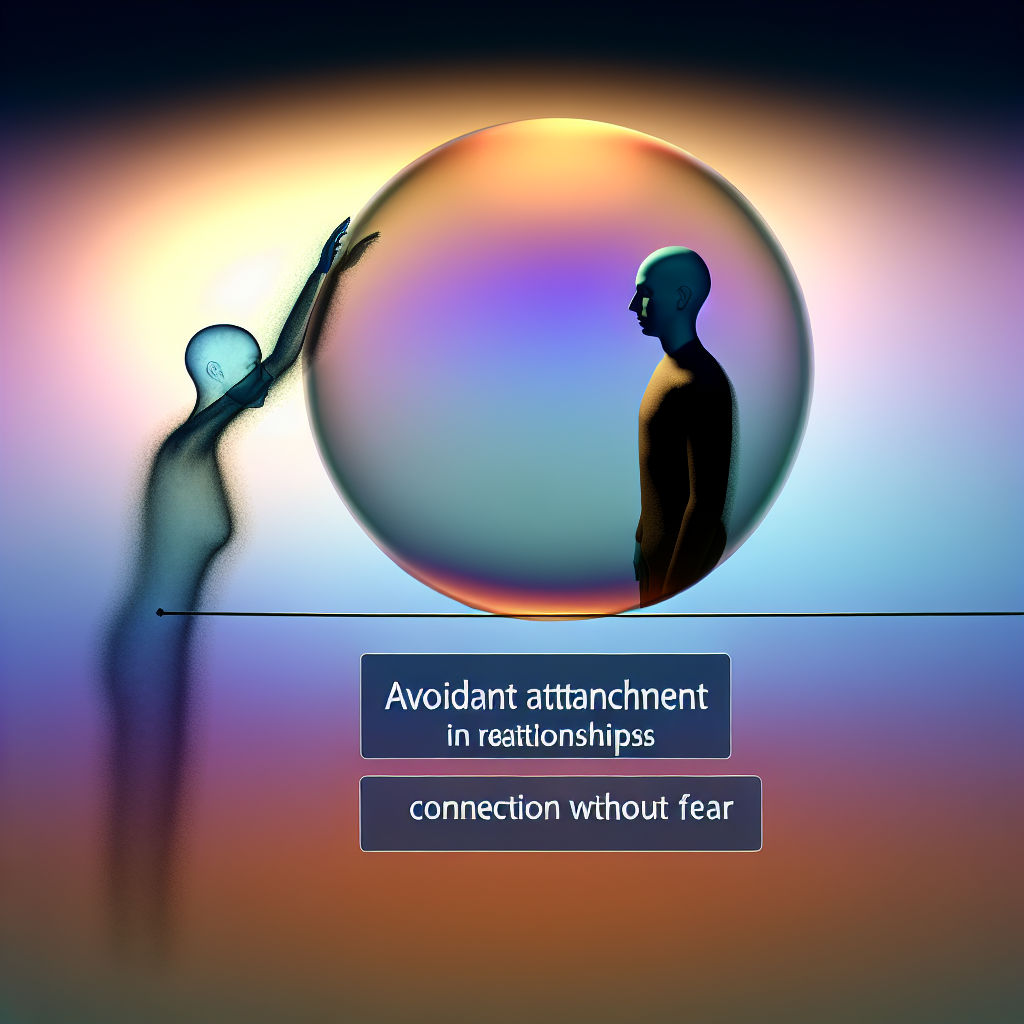Avoidant Attachment in Relationships: Finding Connection Without Fear
Why Understanding Avoidant Attachment Can Transform Your Love Life
In the ever-evolving landscape of modern relationships, individuals are seeking deeper emotional connections, stronger communication, and more authentic vulnerability. With dating becoming increasingly digital and fast-paced, an often overlooked but critical factor that governs the quality and longevity of romantic connection is our individual attachment style. One of the more elusive and misunderstood styles is avoidant attachment — a pattern that frequently surfaces in adult relationships but is seldom addressed directly by singles or couples.
Avoidant attachment stems from early life experiences and is characterized by a strong desire for emotional independence. People with this attachment style often value autonomy so highly that they inadvertently build emotional walls, making it challenging to form and maintain close romantic connections. While avoidantly attached individuals might appear self-sufficient, confident, and independent, underneath often lies a deep-seated fear of being vulnerable, hurt, or engulfed by intimacy.
This topic is especially relevant for singles ranging from 18 to their 80s, as understanding attachment styles can empower people across all ages. Whether dating for the first time, reentering the dating scene after a divorce, or pursuing new relationships later in life, awareness of attachment behavior can transform patterns of disconnection into opportunities for meaningful intimacy.
As dating experts and matchmaking strategists at HitchMe.com, we’ve seen how avoidant attachment can silently derail potentially meaningful connections. By recognizing the signs and learning to manage these traits — both within ourselves and in potential partners — we can move toward healthier, fear-free relationships.
Understanding avoidant attachment doesn’t mean labeling someone as flawed. It’s about illuminating behavioral patterns so that emotional safety and mutual growth become possible. With the right tools, emotional awareness, and a shift in perspective, it is entirely feasible for avoidant individuals to experience deep connection — without overwhelming fear.
What Psychology Reveals About Avoidant Attachment
Avoidant attachment as a psychological construct originates from Attachment Theory, first developed by psychologist John Bowlby in the 1950s. Later expanded by Mary Ainsworth through her “Strange Situation” research, attachment theory identifies different attachment styles in children — secure, anxious, and avoidant — which often carry into adulthood unless consciously addressed.
Avoidant attachment, specifically known in adult theory as “Dismissive-Avoidant,” has been studied extensively in both clinical psychology and relationship science. Individuals with this attachment style tend to de-emphasize closeness and may reinterpret intimacy as a threat to their independence. Research published in the Journal of Personality and Social Psychology indicates that avoidantly attached adults often downplay the importance of romantic relationships and prefer not to depend on others or have others depend on them (Fraley, Waller & Brennan, 2000).
In studies conducted by Dr. Phillip R. Shaver and Dr. Mario Mikulincer, replicable findings suggest that avoidant individuals experience heightened stress during moments of emotional intimacy, triggering coping mechanisms such as emotional withdrawal, intellectualization, or suppressing romantic feelings altogether. However, these behaviors are not necessarily driven by a lack of desire for connection — rather, they are attempts at self-protection learned during early development from caregivers who may have been unresponsive or emotionally unavailable.
Can Avoidantly Attached People Have Happy, Healthy Relationships?
Dating someone with avoidant tendencies or recognizing avoidant traits within oneself isn’t necessarily a relationship death sentence. In fact, a study published in the Journal of Social and Personal Relationships revealed that avoidant individuals are capable of experiencing deep relational satisfaction, particularly when partnered with individuals who possess secure attachment styles and demonstrate emotional patience and reliability (Simpson & Rholes, 2017).
Therapeutic modalities such as Attachment-Based Therapy and Cognitive Behavioral Therapy (CBT) have demonstrated success in modifying avoidant behavior patterns. These therapeutic approaches aim to reframe negative beliefs about closeness and vulnerability, helping clients tolerate intimacy rather than fear it. Furthermore, expert couples therapists such as Dr. Sue Johnson, developer of Emotionally Focused Therapy (EFT), emphasize that secure attachment can be taught and learned over time, helping avoidant individuals build trust and emotional connection in relationships.
Reading foundational works like Attached by Amir Levine and Rachel Heller or engaging in online therapy platforms such as BetterHelp or Talkspace can also serve as steps toward acknowledging and healing avoidant attachment.
Let Love In: Healing Avoidant Patterns and Embracing Connection
Avoidant attachment doesn’t have to be a roadblock to love. With insight, intentionality, and compassion — both for oneself and one’s partner — emotional intimacy can evolve into something safe and fulfilling. Understanding the root of avoidant behaviors and addressing them with empathy allows singles of all ages to build meaningful connections without fear. With effort and awareness, vulnerability transforms from something to fear into a powerful bridge to love.
Resources & References for Further Reading
- Fraley, R. C., Waller, N. G., & Brennan, K. A. (2000). An item response theory analysis of self-report measures of adult attachment. Read Study
- Simpson, J. A., & Rholes, W. S. (2017). Adult attachment orientations, stress, and romantic relationships. Read Study
- Mikulincer, M., & Shaver, P. R. (2007). Attachment in Adulthood: Structure, Dynamics, and Change. APA Publishing
- Levine, A., & Heller, R. (2012). Attached: The New Science of Adult Attachment and How It Can Help You Find—And Keep—Love. Buy on Amazon
- Johnson, S. (2008). Hold Me Tight: Seven Conversations for a Lifetime of Love. Buy on Amazon
- BetterHelp Online Therapy
- Talkspace Online Therapy
Concise Summary:
Understanding avoidant attachment is crucial for building meaningful relationships. This attachment style, characterized by a desire for emotional independence and fear of intimacy, can be transformed through self-awareness, therapeutic intervention, and compassionate partnering. By addressing the root causes of avoidant behaviors, individuals can overcome their fears and embrace deep, fulfilling connections.

Dominic E. is a passionate filmmaker navigating the exciting intersection of art and science. By day, he delves into the complexities of the human body as a full-time medical writer, meticulously translating intricate medical concepts into accessible and engaging narratives. By night, he explores the boundless realm of cinematic storytelling, crafting narratives that evoke emotion and challenge perspectives. Film Student and Full-time Medical Writer for ContentVendor.com




